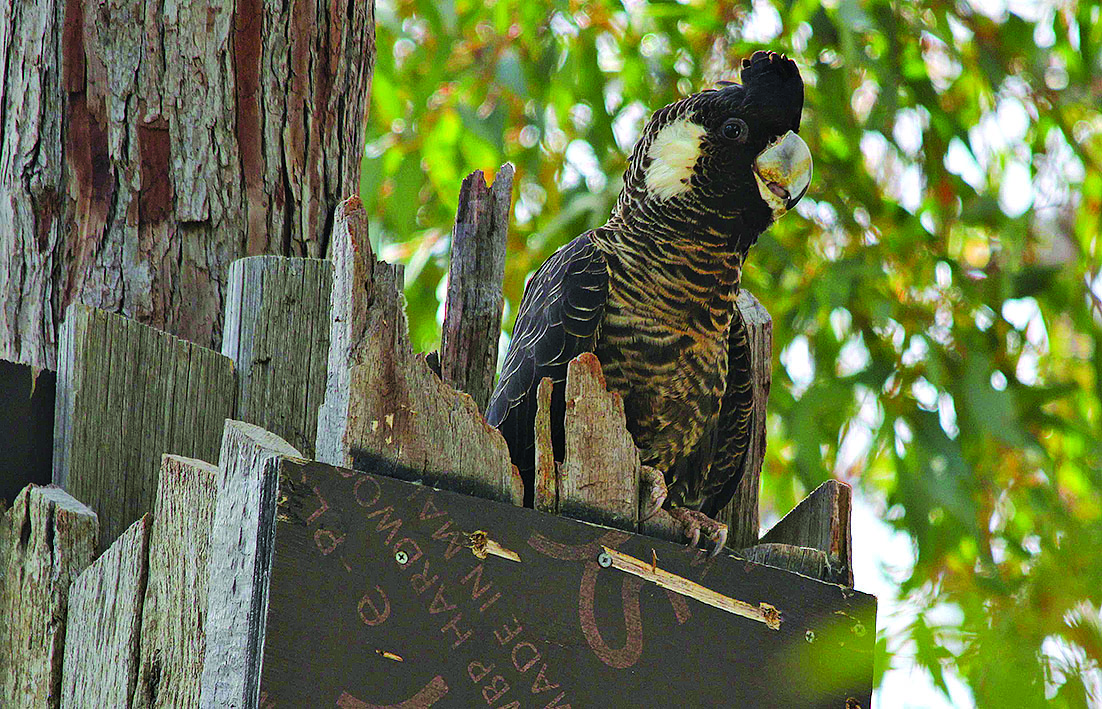
THE rarest black cockatoo in WA only visits the Perth Hills to feed and unfortunately for growers orchards with apple, pomegranate or persimmon trees are popular with them.
Environmental scientist Simon Cherriman of Mt Helena said Baudin’s black cockatoos come to the hills to feed but rarely breed north of Collie.
According to the Department of Biodiversity, Conservation and Attractions (DBCA) the Baudin’s have been known to forage in orchards since the 1900s when vegetation clearing for forestry and agriculture removed big portions of their suitable feeding habitat.
Their traditional diet consisted of mainly seeds from marri trees but also various banksias, hakeas and jarrah and occasionally insects and insect larvae.
DBCA said Baudin’s, which face ongoing habitat loss from vegetation clearing and reduced food and water availability due to climate change, are now known to forage in apple, pear, persimmon and nut orchards as well as pine plantations.
The Baudin’s, which are listed as a threatened species under the Biodiversity Conservation Act 2016, do a lot of damage to fruit in orchards, according to Hills Orchard Improvement Group president Bruno Del Simone and growers have limited measures available to stop the birds getting into their orchards.
Mr Del Simone said the birds just went for the seeds and did not eat the fruit.
“Look at the damage on the ground – if one bird ate one apple it would be enough for him – but (they) decimate everything – an apple has probably got about eight seeds in it,’’ he said.
“The only control is the use of a gas gun (as) it’s illegal to shoot them.
“Also there is a problem that you can’t start before 7.30 in the morning and you’ve got to turn off at 6 o’clock at night time.
“They’re a pretty disruptive bird.’’
He said growers worked hard all year but could lose $20,000 to $30,000 of fruit and could not get any compensation.
The birds are particularly disruptive a couple of months before harvest.
“They seem to come back the same time every year so they know there is a food source there,’’ he said.
“Unfortunately the problem is they have lost their habitat these birds.
“Before they used to roost out at Wangara and the pines, down at Murdoch – it’s all been subdivided now so these birds have been pushed more and more – losing their food source and they’ve gone to other areas.”
Growers are left trying to fend them off.
“Netting is extremely expensive to put up and it doesn’t justify it and the problem we have is places like Kaarakin the rehabilitation centre, they rehabilitate the cockys on apples, which is not a very wise thing to do.
“It’s a beautiful looking bird – I’ve got an orchard myself but I don’t grow apples so they don’t really worry me but every August they come around and go on the ground underneath where the stone fruit trees are and they crack the nuts open just to get the seed out so they’re very smart birds.’’
He said the situation would only get worse as more of their habitat was lost.
“Perhaps the shire should incorporate a tax – everyone pays the tax – if they want to preserve the wildlife and compensate the growers – so he’s lost $20,000 worth of fruit so here’s $20,000.’’
DBCA said it was not aware of any recent complaints of black cockatoos destroying fruit crops in the Perth Hills.
A spokeswoman said DBCA regional compliance officers were committed to liaising with agriculturalists to encourage best practice in relation to black cockatoos and orchard management.
“DBCA continues to work in partnership with government and non-government organisations, research institutions and community volunteers to implement recovery actions for the protection, rehabilitation and management of black cockatoos and their habitat across their breeding and non-breeding (foraging and roosting) range,’’ she said.